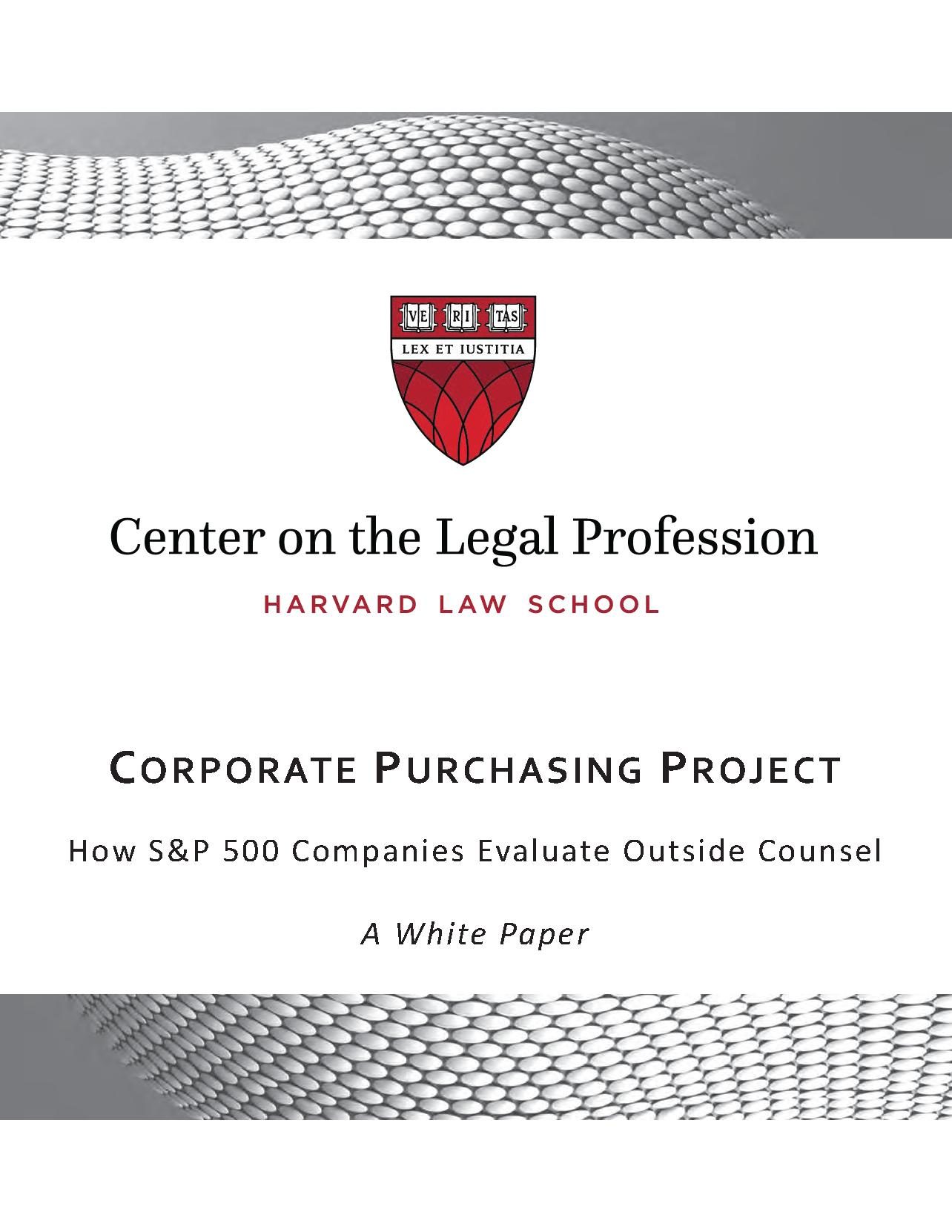Corporate Purchasing Project


This Report is the culmination of the Corporate Purchasing Project – more than four years of scholarly research dedicated to examination of the ways in which S&P 500 legal departments hire and manage outside counsel. It address the core issue of how are relationships between clients and service providers in the corporate legal market evolving, and why?
How are relationships between clients and service providers in the corporate legal market evolving, and
why? Answering this critically important question requires both the availability of unbiased quantitative
information about how large corporations make law firm hiring and assessment decisions and a robust
qualitative and theoretical framework to evaluate broader variations and trends. Yet purchasing decisions
by sophisticated in‐house counsel are a vastly understudied aspect of legal practice and hardly any
scholarly attention has been directed to assessing the ways in which corporate clients are responding to
the numerous changes in law firms and the legal profession itself.
Prior research that focuses specifically on how large companies purchase services from law firms is scant
and limited. Trade publications and general interest periodicals provide business insights and news, but
rely on anecdote and often emphasize novelty for its own sake. Surveys of high‐ranking in‐house counsel
by trade groups or consulting firms also provide useful information, but report low response rates or
do not report response rates, do not compare respondents and non‐respondents, and, most importantly,
primarily study small or mid‐sized privately held companies that together represent a relatively modest
segment of the overall market for high‐quality, strategic corporate legal services. Much of the available
research on in‐house counsel also focuses more on how general counsels attempt to contain costs,
rather than how companies evaluate or manage the quality of elite legal services.
We conceived of the Corporate Purchasing Project as a way to establish and study a body of novel empirical data drawn from surveys and interviews of 166 chief legal officers (“CLOs”) of S&P 500 companies – one‐third of all such large publicly traded companies. As detailed in the Methods section of this report, our data set comprised both written survey data from 139 companies and in‐depth interview responses from 43 companies spread across a diverse range of manufacturing and service sectors.
Specifically we sought to explore four topics of substantial importance about which there is little systematic information:
- How do these companies evaluate the quality of legal service providers when making hiring and
- legal management decisions?
- Under what circumstances do these companies discipline or terminate their relationship with their
- law firms?
- How do these companies evaluate whether to follow ‘star’ lawyers when they change law firms?
- In what ways do these companies manage the intersection between law and public relations?
The resulting dataset is groundbreaking for its depth and breadth and provides a fascinating empirical
look into the decision‐making of CLOs as they seek to balance imperatives like cost control and legal
matter outcomes with the value of long‐term law firm relationships, such as relationship‐specific capital, quality assurance and a soft guarantee of legal capacity when the need arises. Theoretical research published before our study suggests that the preeminence of individual lawyers and specialized teams within law firms (rather than firms themselves) combined with the growing sophistication of CLOs and other in‐house counsel should decrease the value of long‐term relationships. But our findings challenge this notion and suggest an enduring value to long‐term corporation‐firm relationships that should prove foundational to the ongoing evolution of the legal services sector.
There are, of course, limitations to our study. Foremost among these is that our data was collected between 2003 and 2006, and thus entirely pre‐dates the financial crisis and economic recession that began in 2008. It is possible that our data and conclusions are not wholly representative of the current legal services environment, in which most large companies have cut back on expenditures of all kinds and many law firms have laid off significant numbers of attorneys and suffered various forms of distress. Nonetheless, we believe that our study has important descriptive power and enduring normative implications for the legal profession as it continues its dynamic evolution.
Knowledge Search
Search all of our knowledge, from The Practice to Insights to Academic Publications and Reports in one place.


